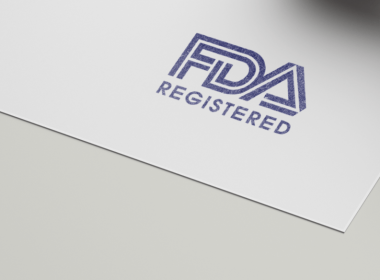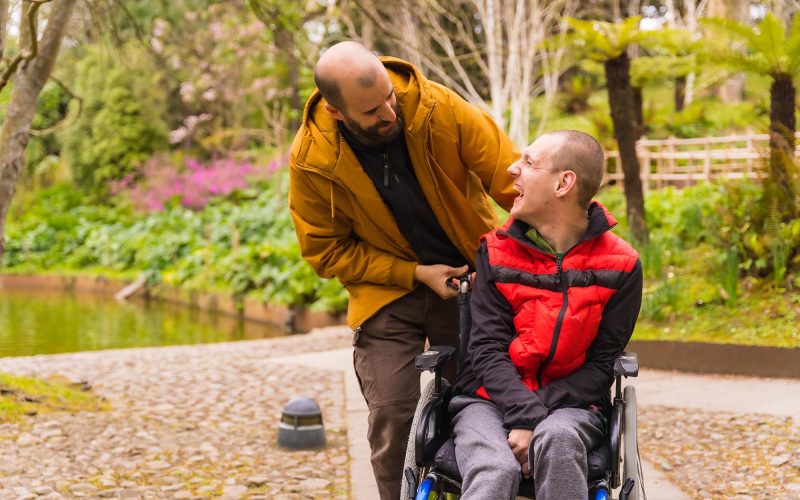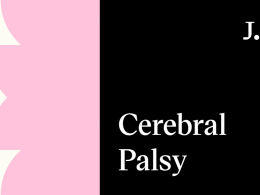Cerebral palsy is a group of disorders that affect the nerves, including those in the brain and spinal cord. The condition often develops before birth or within the first year of life.
Cerebral palsy can impact a child’s ability to move, function, and carry out day-to-day activities. While there is no cure for cerebral palsy, therapy, assistive devices, and more can help alleviate symptoms and improve quality of life. Specific types of cerebral palsy treatment will vary from person to person.

What is Cerebral Palsy?
Cerebral palsy is a collection of disorders that impact the nerves. It can develop because of abnormal brain development or damage to the brain early in life. It most often leads to movement, muscle tone, and balance problems.
People with cerebral palsy might have uncontrollable jerky movements or rigid and stiff muscles. Other times, they may have difficulty with depth perception or performing activities requiring high levels of coordination. Children with cerebral palsy may also experience other problems such as pain, seizures, developmental disabilities, or difficulty with speech and communication.
About two to three of every 1,000 children born will have cerebral palsy. Most often, doctors diagnose cerebral palsy early on in life, but the symptoms are not always visible immediately. Parents may only notice that something is wrong when their children experience difficulty or delays in reaching certain development milestones.
What Are the Treatment Options Available for Cerebral Palsy?
The treatment for cerebral palsy is individualized. It will depend on your child’s needs and level of functioning. Throughout early development, you should be in close contact with your child’s doctor. Careful evaluation and follow-up tests can help doctors diagnose cerebral palsy.
Early intervention is essential in helping children with cerebral palsy. Based on your child’s symptoms and diagnostic tests, the doctor will design an appropriate management plan for your child which may include working with certain specialists, such as a speech therapist or an occupational therapist. Each plan will be different. What works for one person with cerebral palsy might not work for someone else.
Treatment will often involve multiple factors to help manage your child’s symptoms and foster independence and functioning. Cerebral palsy treatment plans may include the following components:
Medications
While medications are not a cure, they can help alleviate some of the symptoms of cerebral palsy. For example, if your child experiences seizures, the doctor might prescribe medication to help prevent seizures and reduce seizure risk.
Your child may also need to take certain medications for pain relief or to help reduce muscle spasms, a common symptom of cerebral palsy.
Surgery
Surgeries can help to correct complications from cerebral palsy, including problems in anatomy or alignment. If specific muscles are tight and rigid, surgery can help to relieve some of the tension.
One common problem that people with cerebral palsy may experience is hip displacement, which may also require surgical correction. Sometimes, doctors may recommend more than one surgery to help correct problems related to cerebral palsy.
Therapy and Assistive Devices
Children with cerebral palsy may also work with specialists to help improve their movement and coordination. For example, physical therapists can help improve walking and posture. Occupational therapists can help children improve fine motor movement skills. If children have speech difficulties, they may also work with speech therapists to improve their communication ability.
Special accommodations and tools can also improve independence and mobility. For example, a child may use a wheelchair or a rolling walker. If one side of the body is impacted, a child might use a special brace to improve his or her ability to walk. Children may also use specialized devices to communicate with those around them.

Can Cerebral Palsy Be Prevented?
Cerebral palsy can happen to anyone, but minimizing certain risk factors may decrease your child’s chances of developing cerebral palsy.
Cerebral palsy is often caused as a result of brain damage. An infant can suffer brain damage before birth, during birth, or shortly afterward. It is important for medical professionals to take proper precautions to avoid preventable damage of the brain by doing the following:
- Ordering c-sections in a timely manner: If it appears that the baby is in distress and receiving low levels of oxygen or if medical professionals do not believe the baby will be able to safely exit the birth canal naturally, a c-section should be performed
- Using forceps and similar instruments carefully: Applying too much force when in contact with an infant’s head can damage the brain
- Promptly treating jaundice: If left untreated, it may result in brain damage
- Treating infections during pregnancy: Infections in the mother or fetus during pregnancy should be treated immediately
- Monitoring oxygen and blood flow: Medical professionals should regularly monitor oxygen and blood flow to the baby during pregnancy and delivery. If oxygen and blood flow to the brain drop too low, it can result in brain damage within minutes
If you believe a medical professional failed to take reasonable measures, like those listed above, to prevent the risk of your child developing cerebral palsy, you may qualify to file a medical malpractice lawsuit. Contact our team for a no-cost legal evaluation to see if you may be eligible to file a cerebral palsy lawsuit. A cerebral palsy lawyer can help you hold potentially negligent medical providers accountable for your child’s injuries.

What is the Typical Prognosis for People with Cerebral Palsy?
The prognosis for people with cerebral palsy will vary based on symptom severity and type. Some people with cerebral palsy can live independently while others may need 24/7 care. People with cerebral palsy also have a normal life expectancy.
Adults with cerebral palsy should continue to be in contact with their doctors and be alert to the development of other health problems that are associated with cerebral palsy. For example, due to limited mobility, some people with cerebral palsy are at a greater risk for obesity and lower bone density.
Overall, as assistance and resources grow, the quality of life for people with cerebral palsy has also improved.
See If You Are Eligible For Compensation For Cerebral Palsy Treatment
If you believe the careless actions of medical professionals may have caused your child’s cerebral palsy, you may be eligible to file a medical practice lawsuit. A successful lawsuit can help recover compensation for your child’s medical care, cerebral palsy treatment, therapy costs, and more. Fill out the no-obligation form below for more information.












